Moth is any of a variety of insects closely related to butterflies. All butterflies and almost all moths have two pairs of wings—a pair of large front wings and a pair of smaller hind wings. Moths and butterflies together form the insect group Lepidoptera. The name Lepidoptera comes from two Greek words: lepis, meaning scale; and pteron, meaning wing. The name refers to the fine, powdery scales that cover the wings of butterflies and moths.
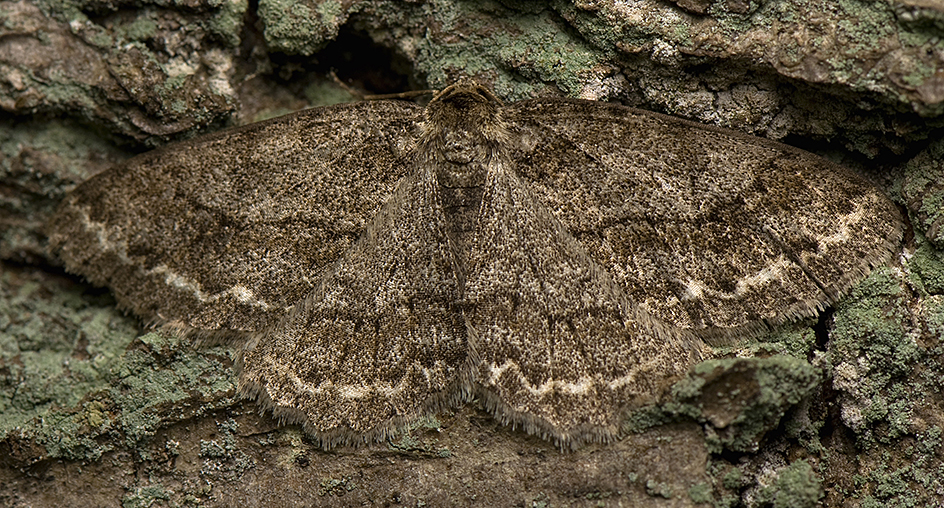
Moths live throughout the world, except in the oceans. They inhabit steamy jungles near the equator. They have even been found on icecaps in the Arctic. Moths vary greatly in size. The largest moths are the giant Hercules moth of Australia and the giant owl moth of South America. They have a wingspread of about 12 inches (30 centimeters). The smallest moths have wingspreads of about 1/8 inch (0.3 centimeter). These moths belong to a group called leafminers.
Like butterflies, moths change in form as they develop into adults. Only the adult form of a moth has wings. Female adult moths lay many tiny eggs. The eggs hatch into wormlike caterpillars. Most caterpillars eat almost constantly and grow rapidly. Some of them hibernate and take months or years to develop into adults. When fully grown, many moth caterpillars form a cocoon made of silk around themselves. The caterpillar then becomes a pupa by shedding its skin and creating a shell-like covering around itself. The insect goes through its final changes inside its pupal covering. Eventually, the moth breaks out of the covering as a fully developed adult.
Moths differ from butterflies in a number of important ways. For example, most moths fly at dusk or at night. The majority of butterflies fly during the day. Among most moths, the hind wing is attached to the front wing by a hook or set of hooks, called a frenulum. Butterflies lack a frenulum. In addition, most butterflies have antennae that widen at the ends and resemble clubs. The antennae of most moths are not club-shaped. Many male moths have larger antennae than do female moths.
Some moths are regarded as pests because their caterpillars feed on and damage trees, food plants, or clothing. However, moths play important roles in nature. Some are valuable to people. Many adult moths pollinate flowers. Numerous birds rely on moth caterpillars as their main food. People use caterpillars of certain moths to produce silk, which comes from the cocoons.
The bodies of moths
A moth’s body, like that of any insect, has a hard, shell-like skin called an exoskeleton (outer skeleton). The exoskeleton supports the body and protects the internal organs. Also like other insects, moths have bodies made up of three main parts. They are the head, the thorax, and the abdomen.
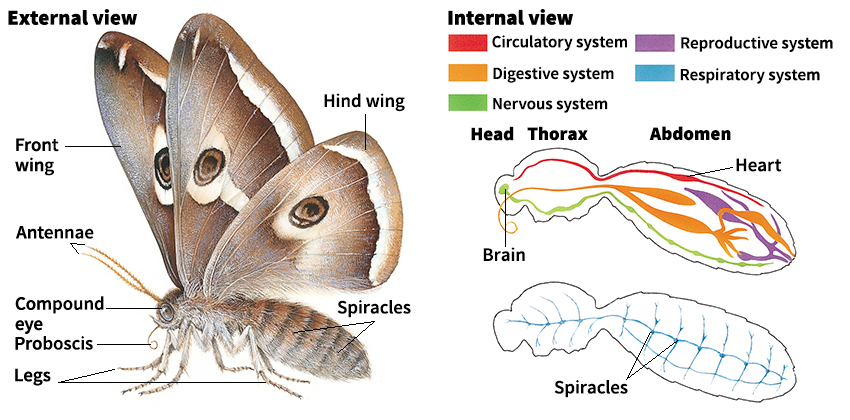
The head
bears the moth’s eyes, antennae, and mouthparts. These structures are the insect’s most important sense organs.
Eyes.
Moths have two large compound eyes on each side of the head. These eyes consist of many separate lenses. Each lens supplies an image of part of the moth’s surroundings. Compound eyes are specially designed to help an insect spot movements, such as the approach of an enemy.
Antennae.
Two antennae stick out from between a moth’s eyes. Moths use their antennae chiefly to smell. Antennae are sensitive to chemicals in the air. Female moths release chemicals called pheromones into the air to attract males for mating. The antennae of a male moth can “smell” a female as far as 5 miles (8 kilometers) away. 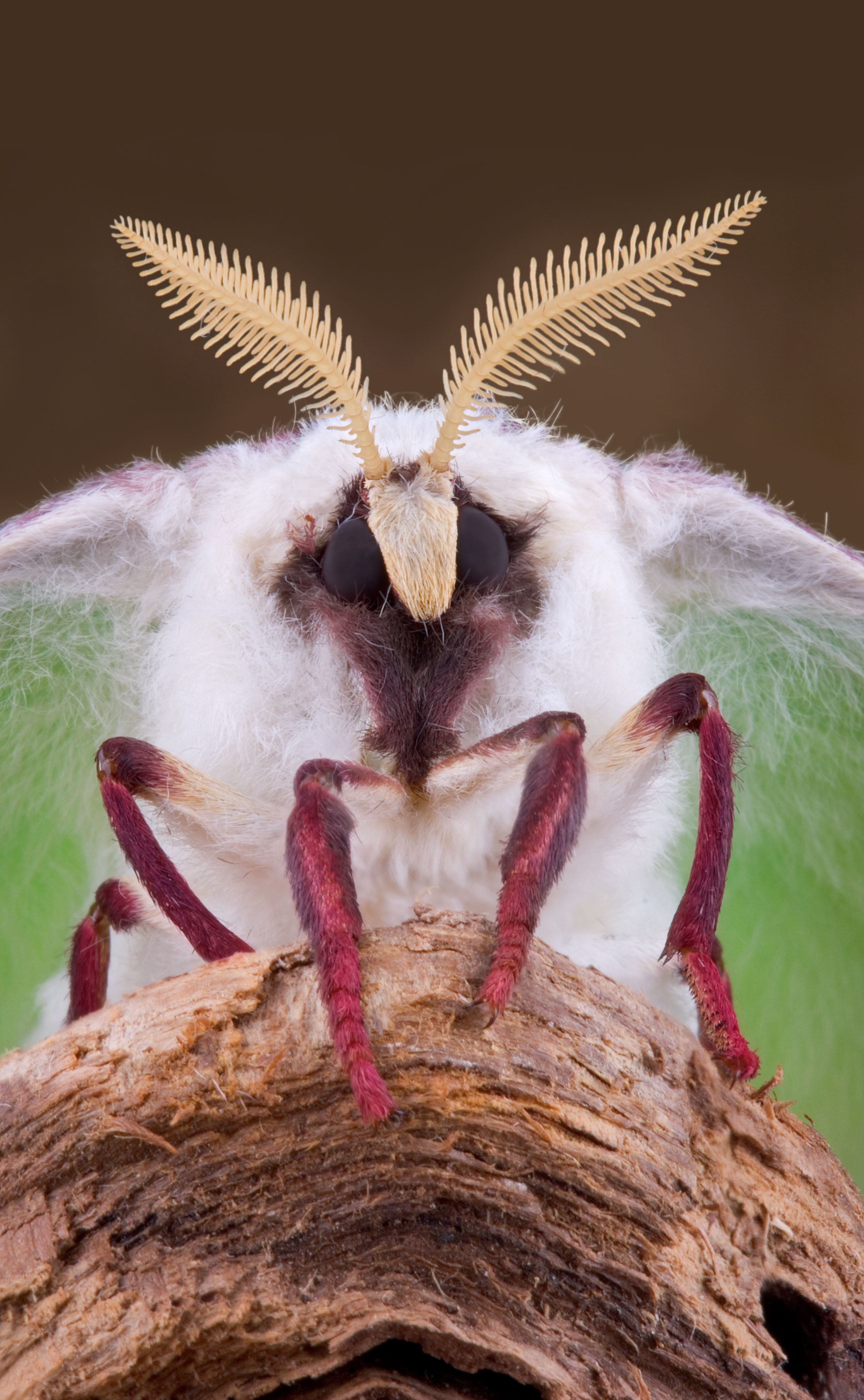
Mouthparts.
Adult moths feed mostly on liquids, such as flower nectar and the juice of fruits. They suck up their food through a long, hollow tongue called a proboscis. The proboscis coils under the head when not in use. Some adult moths lack mouthparts. These adults live only a few days and do not feed.
The thorax
forms the middle section of a moth’s body. It consists mostly of the muscles that power the wings and legs of the insect. The moth’s wings and legs are attached to the thorax.
Legs.
Adult moths have three pairs of legs. Each leg consists of five segments. Joints connect the segments. Taste organs develop on the tips of the legs.
Wings.
Two membranes form each of a moth’s wings. A network of hollow tubes called veins supports the wings. Tiny scales cover the membranes. The scales give the wings their colors and patterns. The females of some species lack wings and cannot fly.
The abdomen
contains the organs of reproduction and the major organs of digestion. Tiny holes called spiracles on the sides of the abdomen lead into the insect’s respiratory system. Spiracles enable oxygen to enter the moth’s body and carbon dioxide to leave.
The life cycle of moths
Every moth goes through four stages of development. The stages are egg, larva, pupa, and adult. The process is called metamorphosis.
The egg.
Female moths lay their eggs one at a time or in masses. The females usually lay in summer or fall. A female moth may lay from a few to more than 18,000 eggs. Most moth eggs measure less than 1/25 inch (1 millimeter) across. Most are round or oval. Often, the female deposits the eggs on the kinds of plants that her offspring like to eat. The eggs of most species hatch within a week. The eggs of some species do not hatch until spring.
The larva,
or caterpillar, that crawls out of the egg is made up of 14 segments, including a head. Caterpillars have three pairs of legs near the front of the body. Most caterpillars also have five pairs of leglike prolegs farther back on the body. Many moth caterpillars are colorful. Some have fierce-looking spines or bristles.
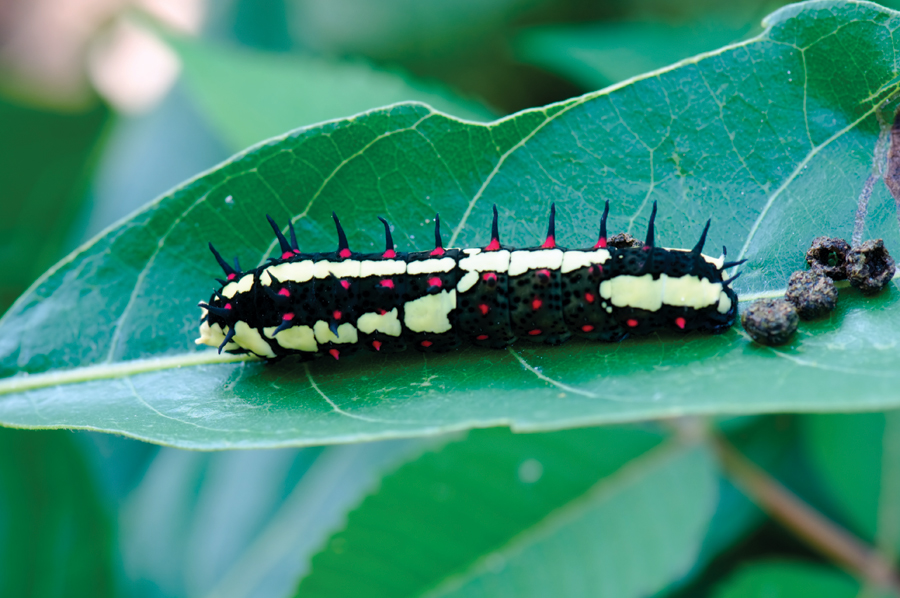
Caterpillars have chewing mouth parts. Moth caterpillars chiefly eat leaves and other plant parts. They may also feed on wood, the larvae of other insects, and hair. One group of moths, the clothes moths, feed on clothing and other materials made of wool.
A short structure called the spinneret sticks out below the mouth. The caterpillar sends out an almost continuous stream of liquid silk through the spinneret. The silk quickly hardens to a slender thread. The thread gives the caterpillar a foothold as it crawls about. This thread can also prevent the caterpillar from falling to the ground if the insect slips off a plant.
Caterpillars reach full size within a month to several months or years, depending on the species and other factors. Like other insects, they shed their skin several times as they grow. This process is called molting.
The pupa.
The final molt transforms the caterpillar into a pupa. The pupal stage is an inactive stage during which dramatic physical changes occur. The caterpillar may spin a protective, silken cocoon around itself for the pupal stage. The insect fastens the cocoon to a tree limb or other solid object. Inside the cocoon, the insect forms a protective covering of a substance called chitin. Some moth caterpillars do not spin cocoons. Instead, they burrow into the ground or hide under loose bark before forming a chitin shell.
During the pupal stage, the insect changes into an adult moth. This change, called pupation, takes a few days or several months, depending on the species.
The adult.
At the end of pupation, the adult moth breaks out of its pupal covering. If the moth has wings, blood quickly pumps into the wings and expands their size. Soon the moth flutters off in search of food or a mate. Most adult moths live only a few days to a few weeks. Some may survive six months or more.
Migration
Many moths need warm air temperatures for their flight muscles to work. Large moths must “heat up” their flight muscles before flying by rapidly vibrating their wings.
Some moths avoid cold weather by migrating to warmer regions. For example, a hawk moth migrates from the United Kingdom and Ireland to southern Europe in the fall. Moths may also migrate to avoid other unfavorable conditions. Bogong moths of Australia migrate from lowland pastures to the mountains during the summer to avoid extreme heat. But food is scarce in the mountains. To survive, these moths enter a resting state called diapause to save their energy. In the fall, they again become active and return to the lowlands to mate.
Defenses against enemies
Moths have many enemies. For example, certain wasps lay their eggs on or inside moth caterpillars. The wasp larvae feed on the body fluids of the caterpillar and eventually kill it. Other animals prey on adult moths. These predators include spiders, birds, and bats.
Moths have developed various ways of protecting themselves against predators. By flying primarily at night, moths avoid many daytime predators. Many moths have coloring that blends with their surroundings. For example, certain moths look like the bark or leaves of a tree. Some moths have markings on their underwings that resemble the eyes of a larger animal. These eyespots are shown when the moth is attacked. They may frighten away predators.
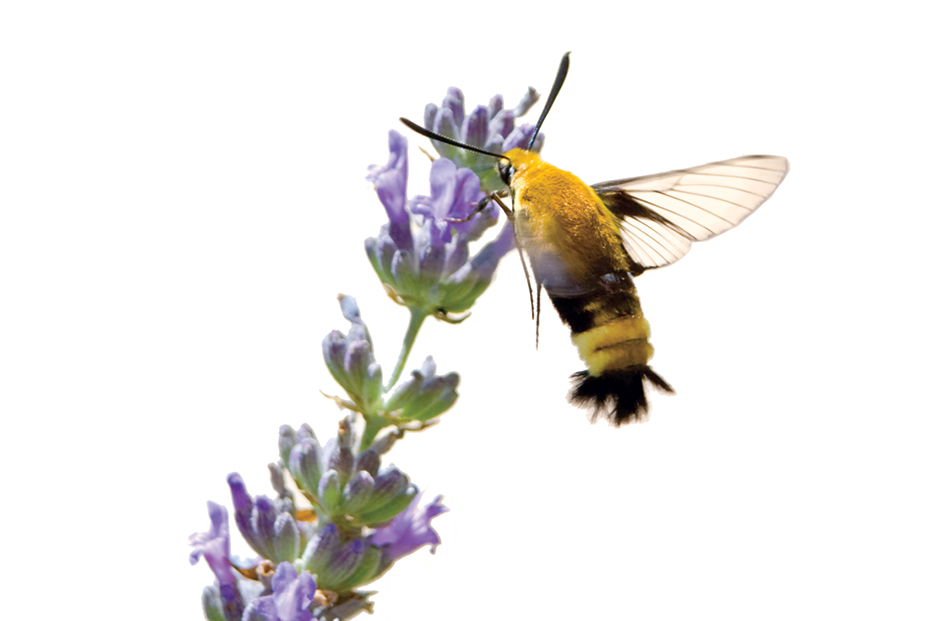
Some moth caterpillars are bad-tasting or even poisonous to predators. Such caterpillars may have vivid markings. An animal that eats one of these caterpillars will likely avoid eating another one marked similarly.
The importance of moths
The best-known benefit of moths to human beings is probably the production of silk. In China, people have used a species of moths called Bombyx mori to produce silk for more than 4,000 years. To obtain the silk, workers unravel the moth’s cocoon into a single, long thread. The thread is then combined with thread from other cocoons and woven into silk fabrics.
Moths are important in the pollination of certain flowers. Pollination occurs when a moth visits flowers to feed on nectar. Grains of pollen stick to the moth’s body as it feeds. The pollen then rubs off on other flowers the insect visits. Some flowers that bloom only at night depend on night-flying moths for pollination. Most flowers pollinated by moths are white, have long tubelike petals, and produce a strong scent.
Moth caterpillars cause damage to crops and forests each year. Some species feed on woolen fabrics and other animal products.
Kinds of moths
There are more than 100,000 species of moths. They are grouped into families, according to common physical features. This section describes six of the most common families of moths. The scientific name of the family is given in parentheses after the common name.
Owlet moths and underwing moths
(Noctuidae) total more than 20,000 species. They form the largest family of moths. Most of these moths are small to medium in size. The majority of species are dull-colored. Many underwing moths, however, have bands of bright colors on the hind wings.
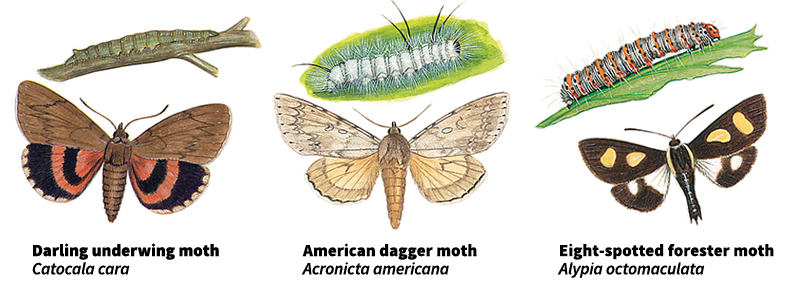
Both owlets and underwings have a pair of special hearing organs called tympani on the thorax. These organs can pick up high-frequency sounds made by bats. Upon hearing a bat, these moths may fly in an irregular pattern to avoid being eaten. Many caterpillars in this family, including cutworms and armyworms, cause damage to crops.
Tiger moths
(Arctiidae) consist of about 10,000 species. They are small to medium in size. Many have brightly colored patterns on their wings. Many caterpillars in this family also have bright coloring. They may be covered with a dense hairlike mat. A common caterpillar of this type is the woollybear caterpillar. It grows into the Isabella tiger moth. Tiger moth caterpillars feed on plants, including poisonous ones. The poison stays in the moths into adulthood. It helps protect them from animals that might otherwise eat them.
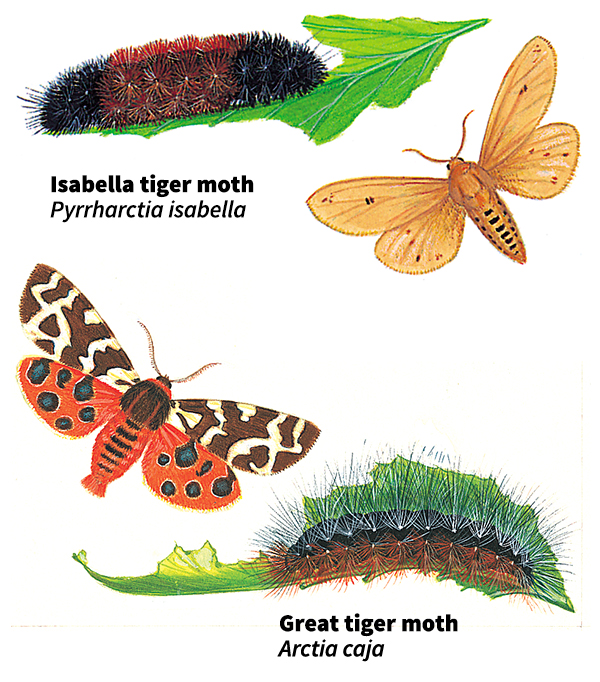
Measuringworm moths
(Geometridae) make up about 12,000 species. Most are small with large wings. The females of several species have no wings.
The caterpillars in this family are commonly called measuring worms or inchworms because of their unusual crawl. They crawl by alternately looping their bodies into the air and then extending their front legs to straighten themselves. Some inchworms, such as cankerworms, damage trees. Several species of inchworms found in Hawaii can catch and eat flies.
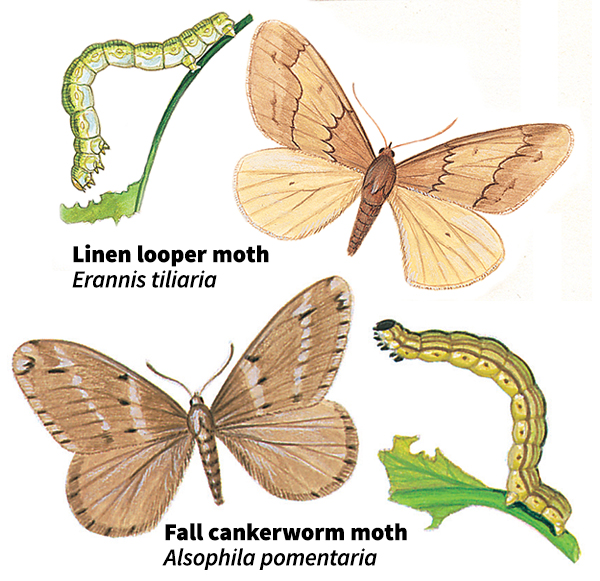
Tussock moths
(Lymantriidae) number about 2,000 species. Adult tussocks do not have working mouthparts, and so they cannot feed. They live only a few days or weeks. These medium-sized moths typically have dull coloring. The females of some species rarely fly. In other species, the females have no wings at all.
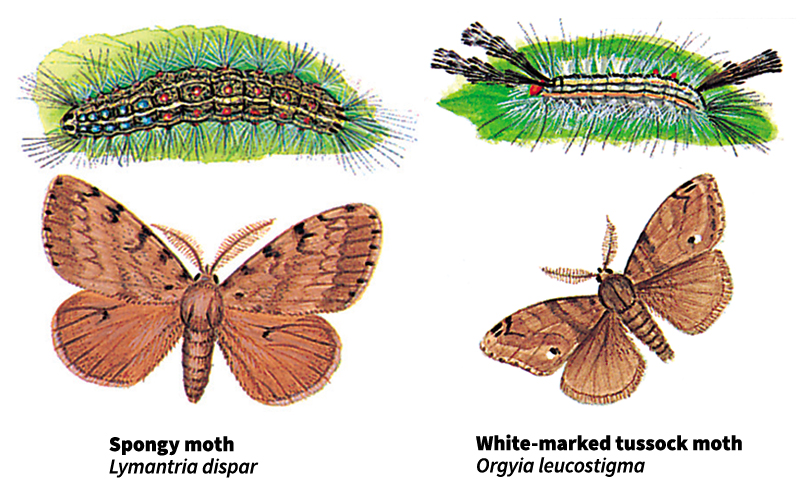
The caterpillars of tussock moths generally have long, hairlike tufts called tussocks on their backs. In some species, these tussocks cause skin irritation if touched. Many tussock caterpillars are pests of North American forests. One well-known species, the caterpillar of the spongy moth, defoliates vast areas of eastern forestland each year by eating leaves.
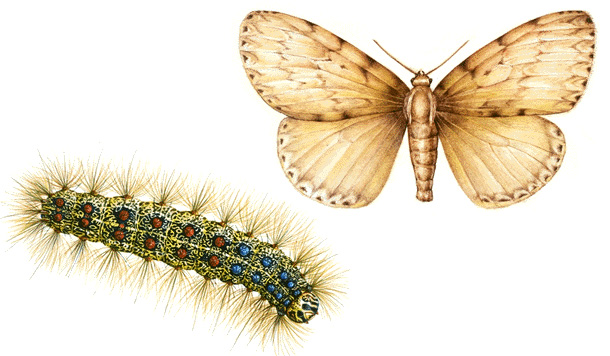
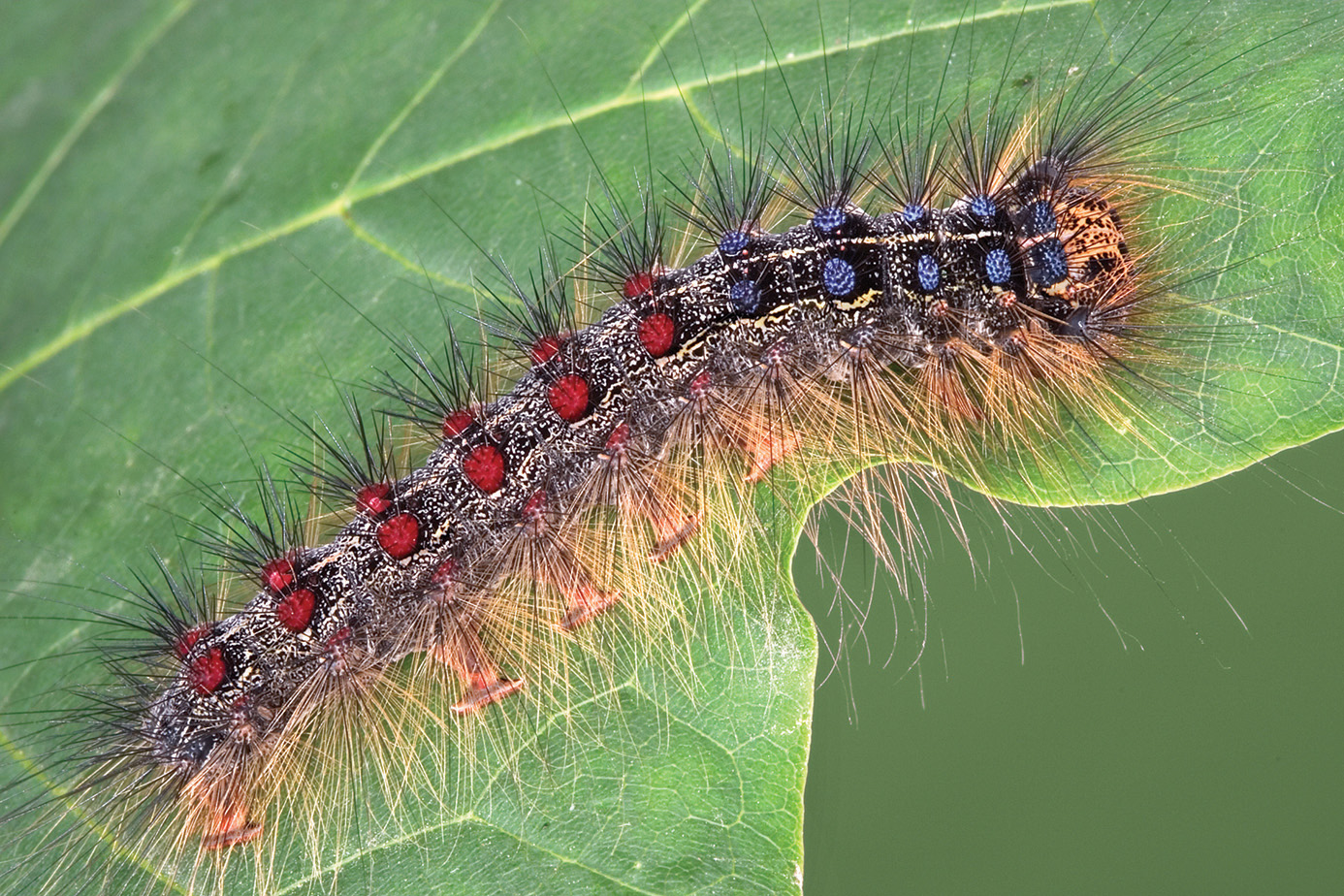
Hawk moths
(Sphingidae), also called sphinx moths, total about 1,000 species. Many of them have bright coloring. Hawk moths are swift flyers. They beat their wings so rapidly that they are often mistaken for hummingbirds. Some species of hawk moths resemble bumble bees or wasps. Hawk moth caterpillars have a curved, hornlike structure near the end of the abdomen. For this reason, they are often called hornworms.
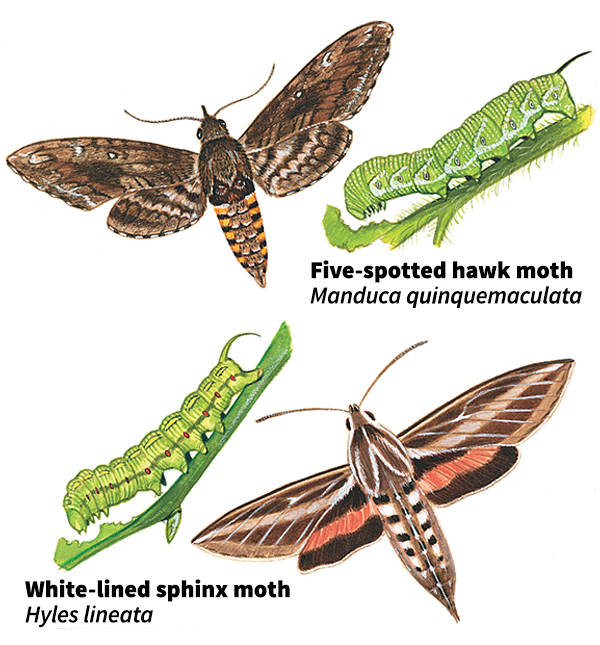
Giant silkworm moths and royal moths
(Saturniidae) consist of about 1,300 species. In general, the members of this family are brightly colored. They have dark or transparent eyespots on the hind wings. Some species, including the luna moth and the giant Hercules moth, have a long, taillike extension on each hind wing. Giant silkworm moths and royal moths do not feed. They live only a few days.
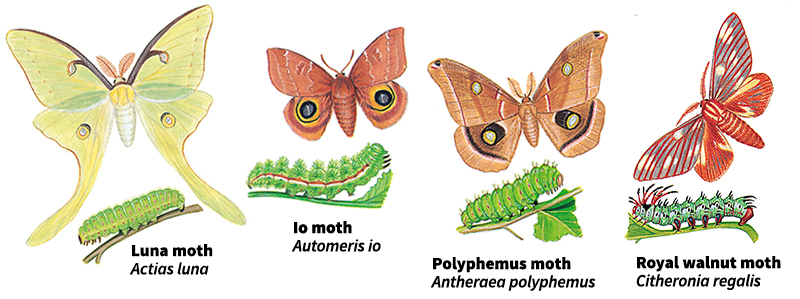
The caterpillars of many silkworm moths and royal moths have stiff bristles on their bodies. In some species, the tips of the bristles contain irritating chemicals. Many caterpillars in this family feed on trees and shrubs. The cocoons of several Asian species produce a coarse silk known as tussah silk. But the species most commonly used in the production of commercial silk belongs to another family.
